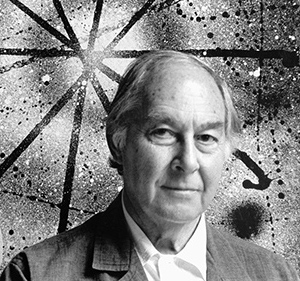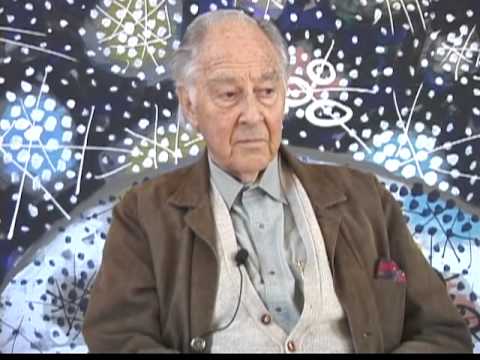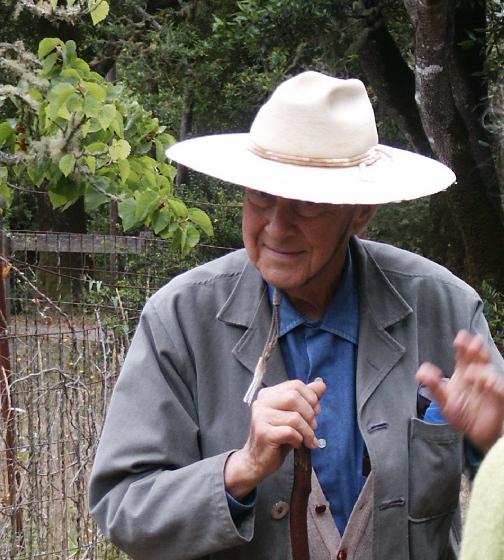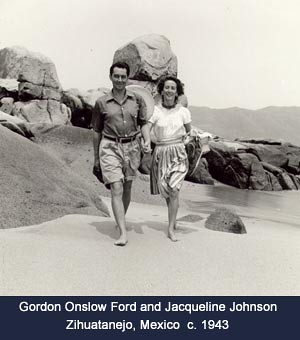
1912 - 2003
Gordon Onslow Ford

description
An English and American artist, theorist, author of several art history books. Born into the family of famous artists, Gordon Onslow Ford soon showed his talent in art; despite the fact that his parents chose for him the profession of a naval officer, he managed to become one of the main representatives of Surrealism in Europe and the USA.
The artist created unique canvases based on his extraordinary vision of the world, which he himself called “inner realism”. The main aim of Ford’s life and art was the reinterpretation of reality and the ability to “see the world again” in accordance with his consciousness, and not with generally accepted norms. The artist’s paintings, which are an interweaving of sinuous lines and a cluster of complex organic forms, separated by luminous spaces, create the impression of amazing and colorful visions. Their multi-layered patterns attract with their decorative, optimistic and spiritual depth, originating in the psychological teachings of Carl Jung, Zen Buddhism and his own metaphysical and aesthetic theories.
The artist is famous for not only his paintings, but also for his scientific works that had a great influence on the development of contemporary US art. To support artists who appeal to the subconscious in their work, Onslow Ford founded the non-profit organization Lucid Art Foundation, which still exists.
Key ideas:
– The main method of Ford’s painting was automatic writing, which implied complete immersion in one’s own subconscious, similar to meditation. The artist believed that only in this state he had full access to his real personality and inner world and could expand the boundaries of his perception.
– The artist created a theory about the meaning of primary elements in painting. Onslow Ford considered line, circle and point to be the elements, on which fine art itself is based. With their help, he created bizarre patterns of his dreams and fantasies on the canvas.
– Unlike many Surrealists, whose works were based on the theory of Freud’s dreams, the artist was more interested in the teachings of Carl Jung on the Collective unconscious. The theme of his work is based on the archetypical, non-representative aspects of consciousness. In his works, Onslow Ford tried to not only express his personal worldview, but also to convey the experience accumulated by mankind over the centuries and preserved at the genetic level.
– The artist paid much attention to scientific and historical research. Together with his colleague and friend Wolfgang Paalen, he participated in many expeditions dedicated to the study of ancient Indian cultures. The authentic art of the ancient inhabitants of Central America, the bright colors of their sculptures and the geometric patterns of ceramics influenced Ford Onslow’s painting style.
– Onslow Ford became interested in Chinese calligraphy and the teachings of Zen Buddhism. He was inspired by meeting famous Asian master Hodo Tobasa, who helped him discover Asian philosophy, its meditation technique, which can help one reach unprecedented heights in the study of the depths of Reason.
1912
1926
1937
1938
1941
1942
1947
1957
1964
1978
1998
2003
The artist was born
The study at the Naval Academy in Dartmouth

Moved to Paris

He met Andre Breton

He moved to the USA

Onslow Ford and Johnson settled in Erongarikuaro

The artist moved to California

He built a house with a large studio

Painting in an Instant

The large retrospective exhibition

Together with Bogzaran and the Robert Anthoine, he organized the Lucid Art Foundation

The death

Gordon Onslow Ford
On Artist
flow
Cubism
Surrealism
Post-impressionism
friends
Andre Breton
Emilio Frances
Kay Sage
Wolfgang Paalen
artists
Vincent Van Gogh
Giorgio de Chirico
Max Ernst
Rene Magritte
Fernand Leger
By Artist
flow
Surrealism
friends
Roberto Matta
Yves Tanguy
Remedios Varo
artists
William Baziotes
Arshile Gorky
Stanley William Hayter
Robert Motherwell
